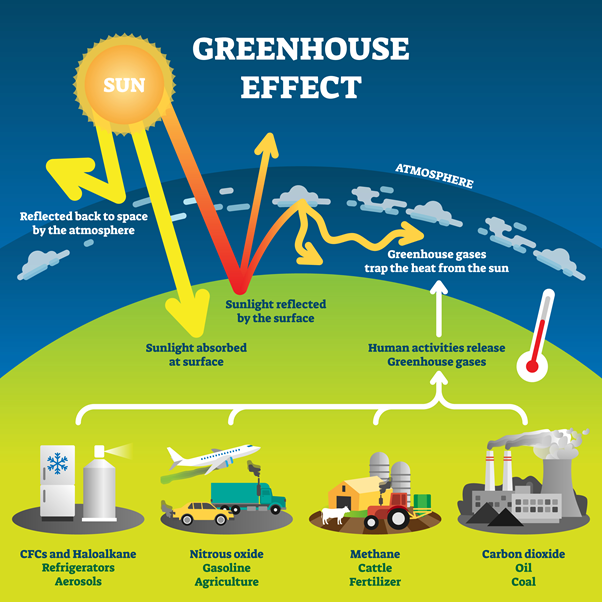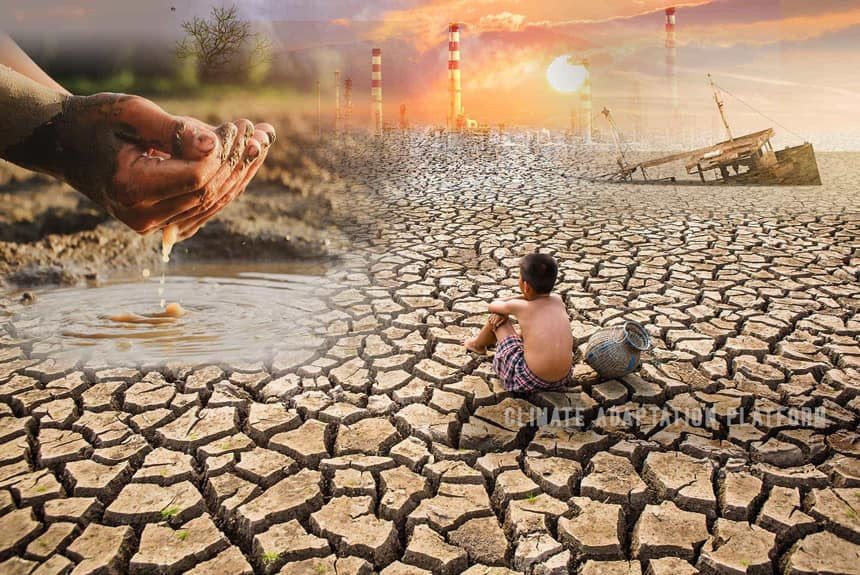
The Clean Air Act provides legal mechanisms to address the transport pollution problem. The Clean Air Act does not give states the right to act according to their own deadlines. EPA developed a policy in order to end the tension between deadlines. This policy was created to allow upwind areas to take responsibility for their pollution. EPA is fulfilling Congress’s intent.

The EPA's Attainment Date Extension Policy reflects a proper interpretation of Clean Air Act regulations. EPA knows that it can be difficult for upwind regions to reach their goal as quickly and efficiently as they would prefer. To this end, EPA has extended attainment deadlines for upwind areas. It also restricted the NOX submission extension to areas where there are documented transport issues. It may be necessary to perform more rigorous controls if an upwind region fails to meet its goals.
EPA had no authority to assign responsibility for transport until 1998. However, by that time, EPA had a sufficient understanding of the magnitude and scope of the transport pollution problem. EPA couldn't obtain adequate redress from transported pollution even after that, until the OTAG was completed. EPA interpreted the Clean Air Act section 181(a), in light its own understanding of the problem of transport pollution.
As stated in EPA's Attainment Polic and Guidance (EPA), the EPA's policy assumes pollutant transport is an essential part of the area's attainment. An upwind state cannot use segregation of emission to attainment. EPA was unable to assess the suitability of control measures by upwind states.
EPA began to understand the problem of transport pollution better in 1999. EPA had analyzed the regional transport pollution and associated air quality and determined that the upwind areas were responsible for the transport of pollution to their downwind regions. EPA and the states worked together to determine the responsibilities for transport. It took several years to complete a regional transport analysis. In the summer 1999, EPA finally announced that it had been assigned transport responsibility. EPA admitted that it was difficult for them to create a comprehensive approach because they didn't have a clear understanding of how to measure the emissions.

EPA responded to comments that questioned the EPA’s Attainment Date Extension policy. While EPA believes it is in accordance with Congress's intent the policy has been criticized by those who claim it does little to provide relief for areas upwind. EPA believes the policy should be applied only as a last resort. Despite the EPA's recognition of the importance of the graduated attainment framework, EPA has not changed its position on the reclassification provision.
While EPA has reclassified Phoenix as moderate under section 179B, the provision was not designed as a punitive measure. It was actually intended to protect areas downwind from the problem of transport pollution. Section 181(a), Clean Air act directs the classification ozone nonattainment area based upon design value. EPA worked with the states to resolve transportation issues during the OTAG.
FAQ
What are the roles of greenhouse gases in climate changes?
Greenhouse gasses are key to climate change. They act like an invisible blanket surrounding the Earth, trapping the infrared radiation that warms it and keeping it from getting too hot. Without them, the planet would be much colder than it is today.
These greenhouse gases are created by human activity such as burning fossil fuels. These activities are increasing in number, which means that more heat is trapped in our atmosphere. This can lead to extreme weather events and rising temperatures.
The most abundant greenhouse gas is carbon dioxide (CO2), which is released when burning fossil fuels such as coal, oil, and gas. Important contributors are also methane and nitrousoxide (N2O), as well fluorinated gases (Fgases).
Due to human activities, the concentration of greenhouse gasses has increased dramatically since preindustrial time. Global warming has caused an increase in temperature all around the globe, and in our oceans. It is also leading to changes such as intense storms and droughts; melting glaciers; and rising seas.
Humans must reduce greenhouse gas emissions to avoid further climate change damage. This can be done by switching from fossil fuels to renewable energy sources such as solar and wind power. We can also take measures such as reforestation or adopting agricultural methods that allow the soil to absorb more CO2 from the air. These actions will help reduce atmospheric concentrations in greenhouse gases and create a healthier ecosystem for all life.
How do developing countries and communities experience the effects of climate change?
Developing countries and communities are particularly vulnerable to the effects of climate change due to limited access to resources, healthcare systems, and technology. Changes in temperature, precipitation, and sea levels increase pressure on already scarce resources, with floods and droughts wearing away at already fragile ecosystems. Rising temperatures can lead to a decrease in crop yields, which will disproportionately affect poorer communities struggling with food insecurity. Extreme weather events like hurricanes or heatwaves can also cause destruction to infrastructure, causing further economic inequality.
Climate change has long-term consequences. They will lead to continued resource scarcity, extreme poverty, and adverse health effects, including increased incidences of vector-borne illnesses like dengue fever and malaria. Additionally, flooding will become more common due to rising sea levels and extreme weather. These risks can put lives at high risk in coastal areas with a dearth of infrastructure or emergency services. Not only does it require reducing greenhouse gas emissions, but other measures like better management and access to medical facilities. This will help with the prevention of diseases like Malaria.
How can human activity impact climate change?
Human activity is one of the major factors contributing to climate change. According to the Intergovernmental Panel on Climate Change. (IPCC), human activity is responsible for more that 70% of all global warming.
Burning fossil fuels: Carbon dioxide is produced when fossil fuels, such as oil and coal, are burned. This increases the already high levels of atmospheric CO2, which acts as a greenhouse gas by trapping heat from Earth's sun and increasing temperatures. This causes higher ocean levels, as Arctic ice melts. It also scrambles weather patterns across the globe, leading to dangerous storms, droughts, floods and other problems that can affect food production and human health.
Deforestation: Deforestation knocks out trees which sequester atmospheric carbon dioxide in their trunks when they take it up during photosynthesis. The albedo is also increased by cutting down forests. It refers to the amount of solar radiation reflected back into space. Also, deforestation can lead to a decrease in local air quality and respiratory problems.
Farming is responsible for 14% to 18% of all anthropogenic greenhouse emissions globally each year. Large amounts of methane gas are released by animal waste due to its richness in methane bacteria. Eating less or none of these products can reduce global warming.
In conclusion, while human activity has had an adverse impact on our environment for centuries, technological advances have made it possible to turn our attention towards the future. We can leverage technology through green innovation to help us move forward in our efforts to reduce climate change and keep everyone safe.
Statistics
- The 100 least-emitting countries generate 3 per cent of total emissions. (un.org)
- According to the 2014 report on Climate Change Impacts, Adaptation, and Vulnerability (page 8) from the United Nations Intergovernmental Panel on Climate Change, governments at various levels are also getting better at adaptation. (climate.nasa.gov)
- Indigenous peoples and local communities receive less than 1% of all climate funding despite scoring wins for people and nature Africa's broken food markets must be fixed to tackle hunger (climatechangenews.com)
- features Earth's average surface temperature in 2022 tied with 2015 as the fifth warmest on record, according to an analysis by NASA. (climate.nasa.gov)
- The 10 countries with the largest emissions contribute 68 percent. (un.org)
External Links
How To
How to Make Your Home More Energy-Efficient and Combat Climate Change
Energy efficiency can help you reduce your carbon footprint, cut down on your utility bills, make your life easier, and increase your comfort.
Your home should be properly sealed and insulated. Check that windows and doors are properly fitted. Add weather stripping to any drafts and seal any gaps between the window frames and door frames.
Insulate your walls, ceilings, and floors to maximize energy efficiency. Make sure to inspect the attic and any other areas in your home for air leaks.
Lighting is responsible for 18% of household electricity use. LED bulbs are up to 80% more efficient than traditional incandescent light bulbs. Installing motion sensors and timers will also help you save additional money by turning off lights as needed.
The cost of replacing an old furnace or boiler can be reduced dramatically by using newer models that are more efficient. Get a programmable thermostat to adjust the temperature depending on whether people are at home or not.
All windows should be replaced by double-glazed units that are more energy efficient and less heat escaping. Low-flow showerheads are a great option, as they reduce water consumption but maintain adequate pressure.
ENERGY STAR rated items can be used to replace appliances that consume up to 50% less power than noncertified models. Make sure to take care of the little details, such as unplugging TV boxes and phone chargers when not in use. This could help save you significant energy.
Overall, these few steps can significantly lower your impact on climate change, decrease monthly electricity costs, making living at home much more efficient!